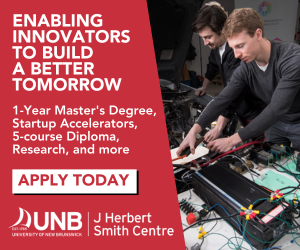Richard Hurley can envision a day when orthopedic surgeons design and 3D print implants right in their office. In fact, his startup, Conceptualiz, has already prototyped a product that enables the design work.
An orthopedic surgeon himself, the New Zealand native says the company’s software lets surgeons design implants on an iPad. And it is in the process of raising about $1 million in equity and other forms of capital to help it gain regulatory approval to sell the software to the orthopedic implant industry.
“We’re bringing a surgeon’s clinical perspective to the process,” he said in an interview last week. “It will reduce the time it takes to get to the market by three times and reduce costs by half. It will make implants higher quality because the surgeon’s input will be taken into account.”
Based in Halifax and Toronto, Conceptualiz is a software company whose platform lets surgeons design implants and do basic 3D modelling on their mobile devices right in their own offices. The company aims to revolutionize the standard process in the multibillion-dollar market for implants, which now involves generic orders being sent off to manufacturers and waiting for the product to come back.
The goal is to allow greater customization and to slash the six-week wait that patients often have to endure to receive their implant. Hurley said Conceptualiz offers a perfect fit with improved alignment and kinematics.
“Surgeons have a unique clinical perspective, and if they can be more involved in the design, then we think that will produce a safer process and higher-quality product,” he said.
Hurley’s co-founders are two University of Toronto computer science professors, Ravin Balakrishnan and Karan Singh, both experienced startup founders who specialize in graphic three-dimensional design and human-computer interaction. Their prototype — which now operates on Apple’s iOS operating system — allows surgeons to design an implant and ship the design to a manufacturer.
The long-term plan is to eventually have 3D printers in doctors’ offices, so the devices can be printed on site, reducing costs and improving service to patients.
As well as developing the working prototype, the company has patents pending for the United States and international markets and is now preparing to seek approval from the U.S. Food and Drug Administration. Since the design work does not directly produce an “invasive” device (meaning one that enters the human body), the company needs only Class II approval, which should take about six months.
The company, which recently presented at the Atlantic Venture Forum, has raised $75,000 in capital so far. Assuming it can attract about $500,000 from angel investors in Toronto, the U.S. and Atlantic Canada, the company will be able to leverage that with public funding of $400,000 to $500,000. That should allow the company to establish a business office in Halifax, a development office in Toronto and take the product through FDA approval.
The company then plans to proceed with the hardware and the more rigorous Class III approval process that will allow doctors to print the implants out with metal in their office. It is already in talks with a major 3D printing company on working together.
“What we’re saying is you no longer need medical implant companies to make them,” said Hurley. “It’s a huge leap.”









